
VITAL SIGNS
Saturday 20 – Sunday 21 March 2010, Sphinx + Film Plateau, Gent
In the context of Courtisane Festival 2010 (Gent, 17 – 21 March 2010). Curated by Stoffel Debuysere and María Palacios Cruz.
What is meaning? And how do we know when meaning takes place? We know that we can read something, or that we are being spoken to, but what if the words find no resonance? What if text becomes an unpronounceable image? How to decode language without symbols, music without sounds, gestures without verbalisation? We live in world of signs, and yet we don’t often interrogate the processes of conveying and creating meaning through which we define our own existence. Each in their own way, the films and videos in this programme analyse and deconstruct those processes, exploring the limits of human communication. Combining historical and recent works, Vital Signs examines the connections and tensions between significance and representation, communication and understanding, meaningless and meaningful – the “spaces between” where meaning breaks though the outer form in which it’s bound up. Gestures to be heard, images to be read, sounds to be deciphered.
———————————————————————————————————————————————————
1. FIGURES OF SPEECH
SAT 20.03 13:00 – Sphinx
Katarina Zdjelar
Shoum
RS/NL, 2009, video, colour, sound, 7’

Two Belgrade musicians listen and interpret the pop hit ‘Shout’ by Tears for Tears, without understanding a single word. They try to grasp the text by means of mimesis. “If meaning is not conveyed through this music, then the music presents itself. Sounds uttered by the two men in Shoum seem familiar as words, and this estrangement of words makes language become music. The notion of knowing something – language, is displaced here by the notion of relating to something – sound.” (KZ)
Imogen Stidworthy
Barrabackslarrabang
UK, 2009, HD video, colour, sound, 9’
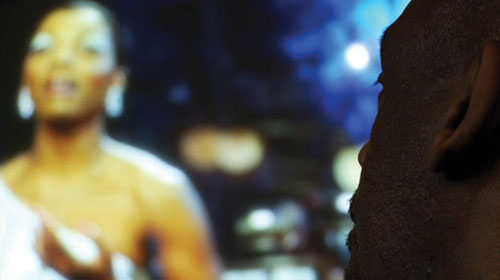
‘Backslang’, a coded form of English which is mostly used by the British working classes in major cities, was developed as a linguistic disguise to protect speakers, especially from the ears of the law. A well-known example is that of Curtis “Cocky” Warren, a notorious Liverpudlian drug baron, who was arrested in the 1990s after the police finally managed to decipher his phone conversations. Backslang shapes a secret space and, like all languages, a space for identification. In this sense, Backslang shouldn’t be understood only as an expression of social and economical conditions, but as a form of resistance.
Anri Sala
Lak-Kat
AL/FR, 2004, video, colour, sound, 10’

A language class in the dark. Three children in Joal, Senegal, repeat a series of words in Wolof. While they get a taste of the texture and the musicality of the language, a constellation of colour and nuance unfolds. “All the words that I had chosen to be spoken by the Wolof kids have got to do to a some extent with colonization. Wolof has words for different shades of darkness which go from white, via grey, and pale, and darker, not so black, to black and pitch black (that tell a lot about the differences, prejudices, casts and hierarchy in their society). And yet they’ve lost the words for red, yellow, blue and use the French ‘rouge’, ‘jaune’ and ‘bleu’ instead. How can such a rich language have no word for the main colors, while being so sensitive to color at the same time?” (AS)
Jacqueline Goss
How to Fix the World
US, 2004, video, colour, sound, 29’
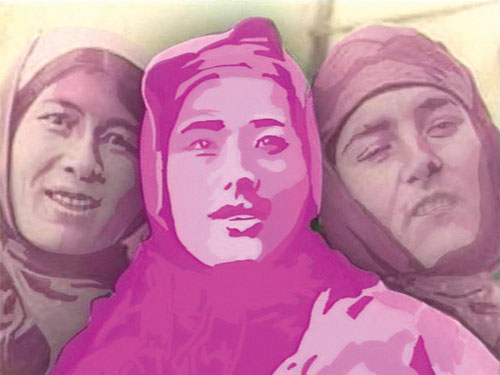
In 1931 Russian psychologist Alexander Romanovitch Luria travelled to Uzbekistan to interview the cotton farmers there. The purpose of his study was to test the results of the education programme put into place a few years before by the Soviet authorities in order to spread the principles of Socialism. In these videos, fragments of these interviews are combined with digital animations based on the photographs of Max Person, who portrayed the everyday life of 1930’s Uzbekistan. The result, both revealing and humorous, powerfully illustrates the role of language in an indoctrinating effort to transform a culture in the name of education and modernisation.
Sven Augustijnen
Johan
BE, 2001, video, colour, sound, 23’
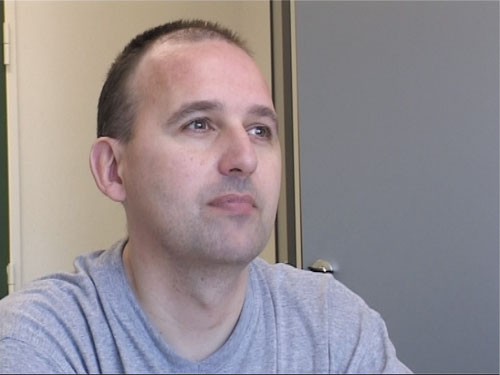
This video is part of a series of portraits of aphasia patients filmed during their logopedic therapy. Aphasia is an illness that affects the language centres of the brain, causing the partial or total loss of the ability to communicate verbally. “The confrontation with aphasic patients made me understand how speech is not an obvious fact. Normally speaking people generally don’t stop to think about the words and ideas that come out of their mouths. But aphasic people often fail to go beyond the first letter of the first word of the idea they want to express”. (SA)
———————————————————————————————————————————————————
2. LIMINAL SPACES
SAT 20.03 14:30 – FILM-PLATEAU
Keewatin Dewdney
The Maltese Cross Movement
CA, 1967, 16mm, colour, sound, 7’

The Maltese Cross system was at the heart of the cinema machine in its infancy. This was the mechanism that originally dissected the continuity of vision in the camera and also re-assembled it in the projector. Keewatin Dewdney uses it as the central motif in this fascinating film, which not only addresses the nature of cinematographic illusion, but also plays in a witty way with the cognitive relationship between word and image. The Maltese Cross Movement reads like a rebus. In the process of its decoding, the deep-rooted process of attributing meaning is reversed, and in doing so generates a turbulent counter current which carries us along to the edge of the logics of meaning.
John Smith
Associations
UK, 1975, 16mm, colour, sound, 7’
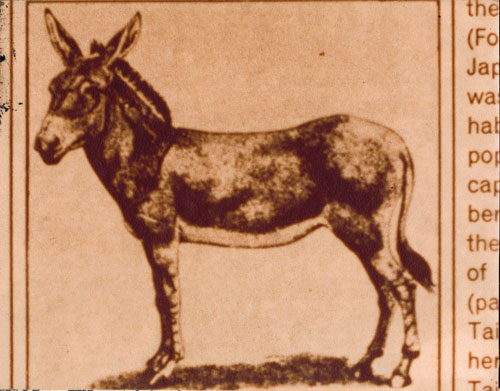
Images from magazines accompany a spoken text taken from Word Associations and Linguistic Theory by the renowned psycholinguist Herbert H. Clark. By cleverly using the ambiguities of the English language, language is set against itself. The connections, often humorous, have a disorienting effect on the process of creation of meaning. Depending on the viewer’s point of view, image and work together (or against) each other to create (or destroy) meaning.
Paul Sharits
Word Movie (Fluxfilm 29)
US, 1966, 16mm, colour, sound, 4’

One of the guiding principles of Paul Sharits’s work is the investigation on the relationships between language and film. Both systems share a certain linearity, but also a structure which can be divided into discreet elements. “A method of empirically probing the cinema system is to allow several redundant and permutating parts to rub against each other in time; emergents from such systematic interactions can be regarded as natural macroscopic representations of microscopic cinematic elements” (PS). One of the first experiments of that investigation is Word Movie, in which each frame corresponds to a word. Following a series of permutations, a game between spoken and written words and images emerges.
Peter Rose
Secondary Currents
US, 1982, 16mm, b&w, sound, 15’

An “imageless” film about the relationships between mind and language. Delivered by an improbable narrator who speaks an extended assortment of nonsense. The shifting relationships between the subtitled narration and the voice-over commentary constitute a peculiar duet for voice, thought, speech and sound. A kind of comic opera, but also a dark metaphor for the order and entropy of language. “I’m an escape artist. I aspire to travel in the fifth dimension, to speak unknown languages, to discover the next stage in the evolution of thought. I construct structural parables that allude to the possibility of there being more to the universe than is permitted by our explanations.” (PR)
Gary Hill
Around and About
US, 1980, video, colour, sound, 5’

Gary Hill’s work is guided by a desire to conciliate the processes that link language to the moving image. In this video, images from the interior of Hill’s office are synchronised to the syllables of a spoken text, dedicated to a lost love. An intimate dialogue, an “organic automation” occurs as the speech pushes the images forward, beyond the screen’s limits. “It was almost as if I wanted to abuse the images, push them around, manipulate them with words. Maybe I was trying to expand this tiny little space, persuade the woman I lived with of the art-life paradox in plain English. On both accounts, I failed.” (GH)
Robert Beavers
Sotiros
US, 1976-78/1996, 16mm, colour, sound, 25’

“In Sotiros, there is an unspoken dialogue and a seen dialogue. The first is held between the inter titles and the images; the second is moved by the tripod and by the emotions of the filmmaker. Both dialogues are interwoven with the sunlight’s movement as it circles the room, touching each wall and corner, detached and intimate”. “The spectator must discover why an image was chosen to be represented; the silence of such a discovery becomes a moment of release. It is not the film maker’s work to tell you: his work is to make the film and to protect what he does, in the serenity of a thought without words, without the quality in words which would destroy what he intends to represent. The point from which to begin then, is with the eye of the spectator, the first sense, and proceed to the others, as he recognizes the presence which becomes awareness. This is not a matter of understanding a film’s content in one way or another; rather the viewer creates an order within himself, and this order is as conscious as Language”. (RB)
———————————————————————————————————————————————————
3. SILENT GESTURES
SAT 20.03 16:00 – FILM-PLATEAU
Pavel Medvedev
Svadba tishiny (Wedding of Silence)
RU, 2003, 35mm, b&w, sound, 28’
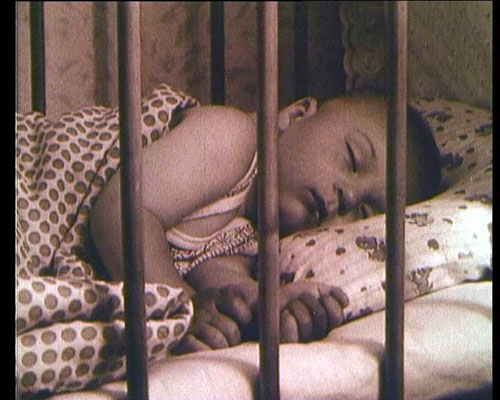
A depiction of a world of silence. Medvedev follows a community of deaf people, from the church where the liturgy is celebrated in sign language, to the wedding party where the guests dance to the rhythm of their hearts. The men in the local foundry, unaware of the infernal industrial sounds that surround them, are busy working on a clock destined to commemorate the 300 anniversary of the city of Saint Petersburg; a jubilee they will never get to hear.
Kathrin Resetarits
Ägypten
AT, 1997, 16mm, b&w, sound, 10’

A multi-layered exploration of sign language; a language which, like the ancient Egyptian hieroglyphs, links the symbolic terminology of words with the mimetic and analogous representations of graphic gestures. Soberly constructed scenes depict how notions like “shark”, “widow”, “Marilyn Monroe”, a James Bond movie sequence, a Viennese song or the story of two travellers treasure-hunting in Egypt are expressed in sign language. An introduction to an unfamiliar way to experience the world, in which sounds are seen but not heard.
Yvonne Rainer
Hand Movie
US, 1966, 8mm to video, b&w, silent, 6’

The debut film of dancer, choreographer and filmmaker Yvonne Rainer, filmed by her dancing colleague William Davis while she was confined to a hospital bed after an operation. The result is a close-up of the only member in her body which could still dance: her hand. A sensual dance of her fingers spreading, stretching and bending: the kind of everyday moves which were also at the heart of her groundbreaking choreographies. The simple, moving force of Hand Movie would have a big influence on artists such as Richard Serra, who would make his own series of “hand” films.
Manon de Boer
Dissonant
BE, 2009, 16mm to video, colour, sound, 11’
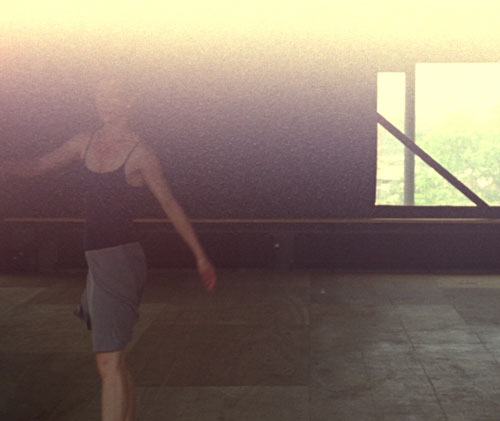
Manon de Boer films dancer Cynthia Loemij while she performs a 10 minute response to Eugene Ysaye’s 3 sonatas for violin solo – a piece of music that holds vivid memories for Loemij. A physical time limit, the 3-minute duration of one 16-mm roll of film, interrupts the camera’s recording of movement. While the dance continues, and the sound of movement is audible, the screen is black for the one minute that is needed to replace the roll of film. During the moments that the image is suspended, a game with the audience’s memory is being played. Just as Loemij has to draw the music from her memory, the viewer can project the image of her dancing body onto the black screen, enabled by the sound and memory of her repetitive movement.
Peter Sulyi
Image cinématographique de Bartok
HU, 1989, video, colour, sound (FR version), 21’
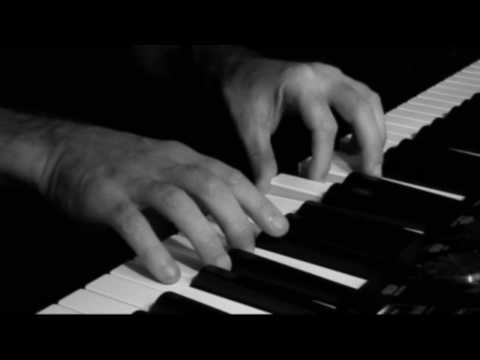
An amateur, soundless Super 8 film fragment represents the only existing moving images of Hungarian composer Béla Bartók. Peter Sulyi films two musicologists as they attempt to reconstruct what Bartok is playing in the images. The position of his hands, the way he holds himself, the pressing of the keys: they are all the expression of a music without sound, which is analysed and deciphered in a careful, courageous but hopeless way. A thriller in true “mano a mano” style.
———————————————————————————————————————————————————
4. CIPHERS OF MEANING
SAT 20.03 17:30 – FILM-PLATEAU
Guy Sherwin
Messages
UK, 1981-1983, 16mm, b&w, silent, 35’

Sherwin made this film as a reaction to his daughter’s discovery of language, partly inspired by the book The Child’s Conception of the World (1929) by child psychologist Jean Piaget. “A major source of inspiration for the film was Maya’s questions about the world, starting with questions to do with her perceptions of the physical world, and as she got older, questions more to do with social behaviour. These ‘innocent’ questions (apart from being almost impossible to answer) seemed to me to be of a philosophical order that challenged long-established ‘truths’ about the world. They made it clear to me that ‘knowledge’ which is hidden and acquired, supplants raw perception in many areas of our understanding (we learn to ‘see’ the table as square, not trapezoid).” (GS)
David Gatten
Hardwood Process
US, 1996, 16mm, colour, silent, 14’
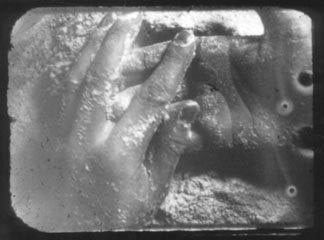
“A hand-made, diary film generated from alternative processing techniques, chemical treatments, and optical & contact printing. A history of scarred surfaces, an inquiry, and an imagining: for the marks we see and the marks we make, for the languages we can read and for those we are trying to learn. Written in the scratches on the floors, the scars on the hands, and the chemical etchings into the film emulsion, these languages of experience are unstable ones, their vocabularies constantly shifting with the passage of time.” (DG)
Paul Abbott
Wolf ’s froth/Amongst other things
UK, 2009, video, colour, sound, 15’
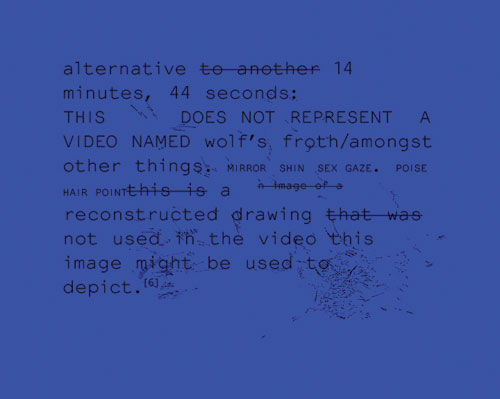
A fascinating, disjunctive conundrum of language, image and sound, whose covert syntax refuses to be unpicked. A quote by filmmaker Hollis Frampton might be appropriate here: “It is as though the formation of the meaningful had some ultimate chemical origin, ‘parts of speech’ combine into propositional molecules through electrovalent attraction, or, where that attraction is lacking, remain in solution as free radicals. If art has had a scientific mission, we find it in the exposure of such mechanisms, in a nonlinear display of the OCCASIONS of meaning. For meaning is not, for image or word, in things; it is in people”.
———————————————————————————————————————————————————
5. SECRET HISTORY OF THE DIVIDING LINE: A TRUE ACCOUNT IN NINE PARTS
SUN 21.03 14:00 – FILM-PLATEAU
David Gatten
See Artist in Focus
Secret History of the Dividing Line
US, 2002, 16mm, b&w, silent, 20’

“Paired texts as dueling histories; a journey imagined and remembered; 57 mileage markers produce an equal number of prospects. The first part of the Byrd cycle, the film focus on two texts by William Byrd, one published and official, the other secret and circulated privately. A torn timeline tells the history of the world and magnified, misaligned cement splices stand in for early 18th century landscapes”. (DG)
The Great Art of Knowing
US, 2004, 16mm, b&w, silent, 37’
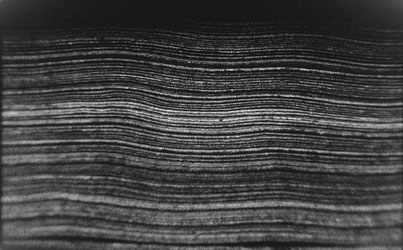
“The fourth 16mm film in the Byrd project series. Taking as a point of departure the volume of the same title by the 17th century Jesuit priest Athanasius Kircher, this films attempts a peripatetic exploration of empiricism over the last 500 years. Additional material is drawn from Byrd’s papers, Leonardo da Vinci’s Codex on the Flight of Birds, as well as writings by David Hume and Jules-Etienne Marey”. (DG)
Moxon’s Mechanick Exercises, or, The Doctrine of Handy-Works Applied to the Art of Printing
US, 1999, 16mm, b&w, silent (18 fps), 26’

“This handmade film, with its images generated almost entirely from cellophane tape, is a meditation on the development of the printing press and its role in the spread of Christianity throughout Europe, the relationship between words and images, the poetics of translation, the fine line between the legible and the illegible, and the passage of the soul through the material world.” (DG)
The Enjoyment of Reading, Lost & Found
US, 2001, 16mm, b&w, silent (18 fps), 24’

“A closely watched candle and an invitation to the dance. William Byrd booms among his books while Evelyn keeps to a quiet window; the volunteer fire brigade sorts through the ashes and Isaac Goldberg tells it like it is. Who read what; when, and why?” (DG)
THANK YOU
All the filmmakers and artists, Dominic Angerame (Canyon), Lara Blanchy (Crousel), Rebecca Cleman and Ann Adachi (EAI), Larissa Fan (CFMDC), Eleni Gioti and Christophe Bichon (Lightcone), Anke Hahn (Deutsche Kinemathek), Philippe Lafosse, Andrew Lampert (Anthology Film Archives), Marie Logie (Auguste Orts), Bryony McIntyre and Barry Esson (Arika), Pieter-Paul Mortier (STUK), Sarah Pialeprat (CFA), Brigid Reagan (Video Data Bank), Julia Sosnovskaya, Mike Sperlinger and Adam Jones (LUX), Hilde Steenssens (Nova Cinema), Gary Thomas (Animate), Mark Toscano and May Haduong (Academy Film Archive), Mark Webber , Gerald Weber and Michaela Grill (Sixpack), Karel Zima (Narodni filmovy archiv), Theus Zwakhals and Joke Ballintijn (NIMK), …